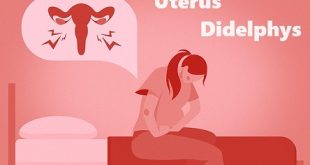What Is Trichomoniasis?
Trichomoniasis, also called trich, is a common sexually transmitted disease (STD). Trich is caused by a tiny one-celled parasite named Trichomonas vaginalis. Anyone who’s sexually active can get it. It affects women more than men, older women more than younger ones, and African American women more than white or Hispanic women. People with trich often don’t have any symptoms, and it doesn’t usually cause problems. But if you don’t get treatment, it raises your chances of getting or spreading other STDs, including HIV.
Pathophysiology of Trichomoniasis
T vaginalis trichomonads are approximately the size of white blood cells (about 10-20 μm long and 2-14 μm wide), although this may vary. Trichomonads have 4 flagella that project from the organism’s anterior and 1 flagellum that extends backward across the middle of the organism, forming an undulating membrane. An axostyle, a rigid structure, extends from the organisms posterior.
In women, T vaginalis is isolated from the vagina, cervix, urethra, bladder, and Bartholin and Skene glands. In men, the organism is found in the anterior urethra, external genitalia, prostate, epididymis, and semen (see the image below). It resides both in the lumen and on the mucosal surfaces of the urogenital tract and uses flagella to move around vaginal and urethral tissues. T vaginalis has also been isolated from the rectum and detected via molecular techniques in the respiratory tract, although these are not common areas of infection. In cases of vertical transmission, T vaginalis may infect the respiratory systems of infants; however, little is known about this condition.
T vaginalis destroys epithelial cells by direct cell contact and by the release of cytotoxic substances. It also binds to host plasma proteins, thereby preventing recognition of the parasite by the alternative complement pathway and host proteinases. During infection, the vaginal pH increases, as does the number of polymorphonuclear leukocytes (PMNs). PMNs are the predominant host defense mechanism against T vaginalis and respond to chemotactic substances released by trichomonads. The presence of antigen-specific peripheral blood mononuclear cells may also suggest that lymphocyte priming occurs during infection. Antibody response to T vaginalis infection has been detected both locally and in serum.
Despite the immune system’s interaction with T vaginalis, infection produces an immunity that is only partially protective at best, and there is little evidence that a healthy immune system prevents infection. One study showed no association between trichomoniasis and the use of protease inhibitors or immune status in HIV-infected women. Another showed that HIV seropositivity did not alter the rate of infection in males.
Symptoms of trichomoniasis typically occur after an incubation period of 4-28 days. Infection generally persists for fewer than 10 days in males. The persistence of asymptomatic infection in women is unknown. Older women have been shown to have significantly higher rates of infection than younger women, which suggests that asymptomatic infection may persist for long durations in women.
Causes of Trichomoniasis
Trichomoniasis (“trich”) is found worldwide. In the United States, most cases occur in women between ages 16 and 35. Trichomonas vaginalis is spread through sexual contact with an infected partner, either through penis-to-vagina intercourse or vulva-to-vulva contact. The parasite cannot survive in the mouth or rectum.
The disease can affect both men and women, but the symptoms differ. The infection usually does not cause symptoms in men and goes away on its own in a few weeks.
Risk factors of Trichomoniasis
Risk factors include having:
- Multiple sexual partners
- A history of other sexually transmitted infections
- A previous episode of trichomoniasis
- Having sex without a condom
Symptoms of trichomoniasis
Symptoms of trichomoniasis usually develop within a month of infection.
But up to half of all people will not develop any symptoms (though they can still pass the infection on to others). The symptoms of trichomoniasis are similar to those of many other sexually transmitted infections (STIs), so it can sometimes be difficult to diagnose.
Symptoms in women
Trichomoniasis in women can cause:
- Abnormal vaginal discharge that may be thick, thin or frothy and yellow-green in colour
- Producing more discharge than normal, which may also have an unpleasant fishy smell
- Soreness, swelling and itching around the vagina – sometimes the inner thighs also become itchy
- Pain or discomfort when passing urine or having sex
Symptoms in men
Trichomoniasis in men can cause:
- Pain when peeing or during ejaculation
- Needing to pee more frequently than usual
- Thin, white discharge from the penis
- Soreness, swelling and redness around the head of the penis or foreskin
Are there any possible complications of trichomoniasis?
A trich infection can make it easier to contract other STIs. Genital inflammation caused by trichomoniasis can increase your risk of getting HIV, along with other STIs. It also becomes easier for you to spread the virus to someone else when you have trich.
Other conditions such as gonorrhea, chlamydia, and bacterial vaginosis often occur with trich. Untreated infections can result in pelvic inflammatory disease (PID). Complications of PID include:
- Fallopian tube blockage due to scar tissue
- Infertility
- Chronic abdominal or pelvic pain
Trichomoniasis and pregnancy
- Trich can cause unique complications in pregnant women. There can be a higher chance of delivering prematurely or delivering a baby with low birth weight. Although rare, the infection can be transmitted to the baby during delivery.
- One study Trusted Source suggested that your child’s risk of developing an intellectual disability increases if you have trich during pregnancy.
- It’s safe to take the medications metronidazole and tinidazole during pregnancy. No adverse effects have been noted.
- If you are pregnant and suspect that you have trich or any other STI, talk to your doctor as soon as possible to prevent complications for you and your child.
Diagnosis of Trichomoniasis
To diagnose a trichomoniasis infection, a doctor will:
- Carry out a pelvic exam
- Take a sample of vaginal or penile discharge for examination under a microscope
- Send a sample to the lab for a test
The results of a lab test will come back in about a week.
To prepare for the appointment, a woman should:
- Avoid douching for at least 24 hours beforehand, as this washes away discharge
- Avoid using deodorant on the vulva, as this masks smells and can cause irritation
- Avoid vaginal intercourse or inserting any object, including tampons, into the vagina for 24–48 hours beforehand
- Schedule an appointment when it is unlikely to be on her period
A Pap, or smear, test does not check for trich. If you have a clear Pap test, you may still have trich or another STI.
A person who tests positive for trich should be tested for other STIs, too.
As trich increases the risk of passing on HIV, women with HIV should also have a trich test once a year or more.
What’s the Treatment for Trichomoniasis?
It’s never easy to find out you have an STD, but with trichomoniasis, there is a bright side: It’s one of the most curable ones. Typically, you’d just have to take one dose consisting of several tablets. If you’re like most people, you’re cured in about a week.
If you or your sex partner has trichomoniasis (also called trich) it’s important for both of you to get treated right away. Even if you don’t have symptoms, you can still spread trich. Plus, trich raises your chances of getting HIV and makes you more likely to pass it to someone else.
What Drugs Are Used to Treat Trichomoniasis?
Trich is usually treated with one of two medicines:
- Metronidazole (Flagyl)
- Tinidazole (Tindamax)
Both drugs are antibiotics and kill the parasite that cause trich. Metronidazole comes in different forms, like pills and creams, but only the pills work on trich.
Make sure to take the drugs just as directed by your doctor. It’s important to finish your medicine even after your symptoms are gone.
Both metronidazole and tinidazole work very well, and generally they’re equally safe, but doctors typically suggest metronidazole first. It’s rare that metronidazole doesn’t get the job done, but if it fails, then you may get tinidazole.
With either drug, you’ll need to avoid drinking alcohol for a short period. You’ll need to avoid drinking while you are taking the drug and for at least 3 days after taking the last dose. If you do drink alcohol, you may experience severe nausea and vomiting.
How Long Do They Take to Work?
You’re typically cured in about 7 to 10 days, but check with your doctor to know for sure. It’s not uncommon for people to get another trich infection a few months after treatment. So make sure you don’t have sex again until you and your sex partners are cured and your symptoms are gone. If you don’t wait, you’ll just keep passing it back and forth. Because it’s common to get another infection, doctors suggest that women get tested again for trich within three months of treatment.
Are There Any Side Effects?
As with all medicines, there are some side effects to the drugs used for trich treatment. Some common ones include:
- Dizziness
- Heartburn
- Taste of metal in your mouth
- Throwing up
- Upset stomach
Can I Get Treated If I’m Pregnant?
Tell your doctor if you have trich and you’re pregnant, or think you might be. Doctors don’t always agree on how to treat trich during pregnancy. That said, there are no studies that show metronidazole will harm you or your baby if you take it when you’re pregnant.
So the standard treatment if you’re pregnant and have trich that shows symptoms is to take a single dose of metronidazole. Some doctors, though, prefer giving a smaller dose over 5 to 7 days to help prevent the nausea and vomiting that is more likley to occur with the higher dose. If you don’t have symptoms, your doctor may still recommend treating the kinfection.
Can I Get Treated If I’m Breastfeeding?
It’s generally considered safe to take metronidazole, but avoid breastfeeding until 12 to 24 hours after you take the last pill.
With tinidazole, it’s less clear. Some doctors suggest you don’t take it at all if you’re breastfeeding. Others suggest that you stop breastfeeding and don’t start again until 3 days after you’ve taken your last dose.
If you’re unsure what to do, you can talk it through with your doctor to see what’s best for you and your baby.
How can I prevent trichomoniasis?
The best way to prevent trichomoniasis or any STI is to not have vaginal, oral, or anal sex.
If you do have sex, lower your risk of getting an STI with the following steps:
- Use condoms. Condoms are the best way to prevent STIs when you have sex. Because a man does not need to ejaculate (come) to give or get trichomoniasis, make sure to put the condom on before the penis touches the vagina, mouth, or anus. Other methods of birth control, like birth control pills, shots, implants, or diaphragms, will not protect you from STIs.
- Get tested. Be sure you and your partner are tested for STIs. Talk to each other about the test results before you have sex.
- Be monogamous. Having sex with just one partner can lower your risk for STIs. After being tested for STIs, be faithful to each other. That means that you have sex only with each other and no one else.
- Limit your number of sex partners. Your risk of getting STIs goes up with the number of partners you have.
- Do not douche. Douching removes some of the normal bacteria in the vagina that protects you from infection. This may increase your risk of getting STIs.
- Do not abuse alcohol or drugs. Drinking too much alcohol or using drugs increases risky behavior and may put you at risk of sexual assault and possible exposure to STIs.
The steps work best when used together. No single step can protect you from every single type of STI.
 Diseases Treatments Dictionary This is complete solution to read all diseases treatments Which covers Prevention, Causes, Symptoms, Medical Terms, Drugs, Prescription, Natural Remedies with cures and Treatments. Most of the common diseases were listed in names, split with categories.
Diseases Treatments Dictionary This is complete solution to read all diseases treatments Which covers Prevention, Causes, Symptoms, Medical Terms, Drugs, Prescription, Natural Remedies with cures and Treatments. Most of the common diseases were listed in names, split with categories.








I frequently order to clean vagina with hot water and medi.soup to reduce the frequency of STI
I want to know if this disease is the same as gonorrhea and have the same symptoms and treatments.
Chlamydia, gonorrhea and trichomoniasis are very common sexually transmitted diseases
what then causes premature ejaculation? or are they related?
The exact cause of premature ejaculation isn’t known.
Psychological factors that might play a role include:
Early sexual experiences.
Sexual abuse.
Poor body image.
Depression.
Worrying about premature ejaculation.
Guilty feelings that increase your tendency to rush through sexual encounters.
it’s Also effective disease of Sexually relationship and More Complicated like Cancer …?
thanks I’m in the same situation but mine is like the desease goes and then comes back any help?
Recurrent Trichomoniasis may require a more prolonged or alternative course of antibiotic treatment. Consult with a healthcare professional for proper diagnosis and appropriate management to prevent recurrence.